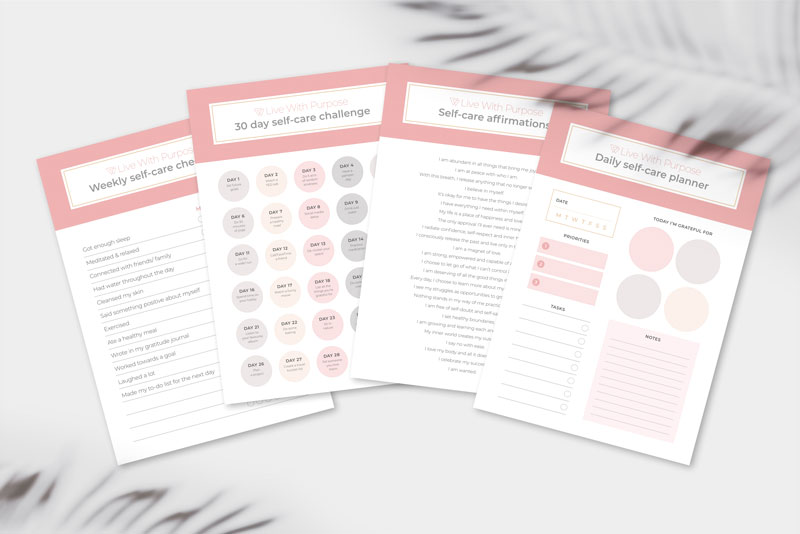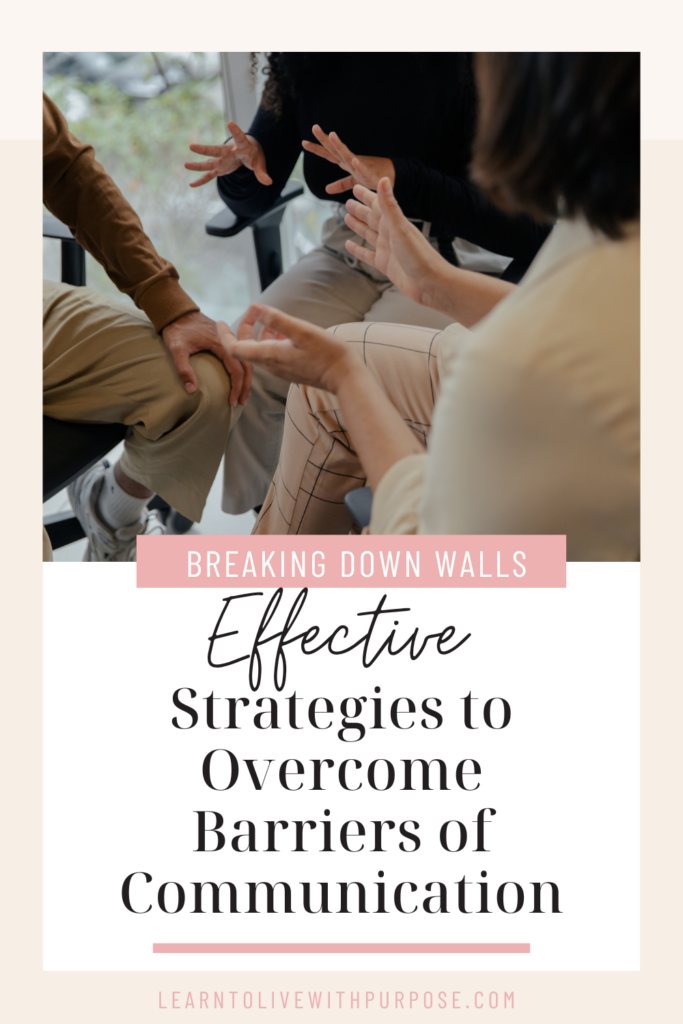
Communication is the lifeblood of relationships, both personal and professional. However, barriers to effective communication can hinder the exchange of ideas, lead to misunderstandings, and strain relationships. 🫠
In this comprehensive guide, we will explore common barriers to communication and provide practical strategies to overcome them.
Whether you’re navigating workplace dynamics, fostering better connections with friends and family, or seeking to improve your overall communication skills, these insights will help you break down the walls that impede effective communication. 🙂
Let’s get started!
Understanding Barriers to Communication:
1. Lack of Clarity and Precision:
One of the fundamental barriers to effective communication is a lack of clarity. Vague or imprecise messages can lead to confusion and misinterpretation. It’s essential to articulate your thoughts clearly, using precise language and providing relevant details to ensure your message is accurately received. 😊
2. Emotional Barriers:
Emotional barriers, such as stress, anxiety, or strong emotions, can impede communication. When individuals are emotionally charged, they may struggle to express themselves clearly or be receptive to others. Managing emotions and creating a calm environment are crucial for effective communication.

3. Cultural and Language Differences:
Cultural and language diversity can create barriers to communication. Differences in language proficiency, communication styles, and cultural norms may lead to misunderstandings.
To overcome this barrier, it’s essential to foster cultural awareness, be patient with language differences, and use clear and straightforward language. 😊
4. Noise and Distractions:
Physical and environmental factors, such as noise and distractions, can interfere with communication. Whether it’s background noise, technological disruptions, or a busy environment, minimising distractions enhances the clarity and effectiveness of communication. 👂

5. Assumptions and Stereotypes:
Preconceived assumptions and stereotypes can create barriers by influencing how we interpret messages. Avoid making assumptions about others’ perspectives or intentions. Instead, approach communication with an open mind, seeking to understand diverse viewpoints without judgment. 🧠
6. Lack of Feedback:
Communication is a two-way process, and the absence of feedback can be a significant barrier. Encourage open dialogue, actively seek input from others, and provide constructive feedback. Creating a feedback loop ensures that messages are received and understood and not going in one ear and out the other.

7. Poor Listening Skills:
Ineffective listening is a pervasive barrier to communication. When individuals fail to actively listen, they miss important details, leading to misunderstandings. Improving listening skills involves giving full attention, avoiding interruptions, and practicing empathy to understand the speaker’s perspective. 😊
8. Power Dynamics and Hierarchies:
Unequal power dynamics or hierarchies within relationships or organisations can stifle open communication. Those in lower positions may feel hesitant to express their thoughts or concerns. Fostering an inclusive and open communication culture helps overcome these power-related barriers. 🫂
Strategies to Overcome Communication Barriers:
1. Prioritise Clarity in Communication:
- Articulate Clearly: Use clear and concise language when conveying your message. Avoid jargon or overly complex terms that may confuse the listener.
- Provide Context: Offer relevant background information to ensure your message is fully understood. Context helps the listener connect the dots and interpret your message accurately.
- Encourage Clarification: Create an environment where others feel comfortable seeking clarification. Encouraging questions can help address potential misunderstandings. 🤗

2. Emotional Intelligence and Regulation:
- Self-Awareness: Develop an understanding of your own emotions. Recognise how emotions may impact your communication style and be mindful of potential emotional triggers.
- Empathy: Practice putting yourself in others’ shoes. Empathetic communication involves understanding others’ perspectives and responding with sensitivity.
- Stress Management: Learn effective stress management techniques, such as deep breathing or mindfulness, to regulate emotions during challenging conversations.
Want to learn more about emotional intelligence? Check out this blog here: How to practice emotional regulation – tips for adults on how to cope
3. Cultural Sensitivity Training:
- Cultural Awareness: Educate yourself about different cultures, communication styles, and customs. A culturally aware approach fosters understanding and respect.
- Language Simplification: In multilingual settings, use simple language and avoid idioms or slang that may not translate well. Visual aids can also help enhance understanding. 🤗
- Inclusivity: Create an inclusive environment that values and celebrates cultural diversity. Encourage open discussions about cultural differences to promote understanding.
4. Create a Distraction-Free Environment:
- Choose Appropriate Settings: Select quiet and conducive environments for important conversations. Minimse disruptions by choosing a location with minimal background noise.
- Digital Etiquette: In digital communication, turn off notifications and ensure a stable internet connection. This helps maintain focus during virtual meetings or discussions. 🧑💻
- Active Presence: Demonstrate active presence by giving your full attention to the speaker. Make eye contact and eliminate distractions to signal that you are fully engaged.

5. Challenge Assumptions and Stereotypes:
- Open-Mindedness: Approach conversations with an open mind, avoiding preconceived notions. Be willing to challenge your assumptions and consider alternative perspectives.
- Promote Diversity and Inclusion: Actively promote diversity and inclusion in your personal and professional spheres. Encourage dialogue that challenges stereotypes and fosters a culture of acceptance.
- Educate Others: Share information that challenges common stereotypes. Education is a powerful tool in breaking down barriers and promoting understanding. 📖
6. Establish a Feedback Culture:
- Encourage Open Dialogue: Foster an environment where open dialogue is encouraged. Create channels for constructive feedback and ensure that all team members feel comfortable expressing their opinions. 🗣️
- Regular Check-Ins: Conduct regular check-ins to gather feedback on communication processes. Identify areas for improvement and implement changes based on the feedback received.
- Model Constructive Feedback: Lead by example by providing constructive feedback. Demonstrating how to give and receive feedback creates a culture of continuous improvement.
7. Enhance Listening Skills:
- Active Listening Techniques: Practice active listening by giving your full attention to the speaker. Avoid interrupting and provide feedback to demonstrate that you are engaged.
- Paraphrasing: Paraphrase the speaker’s message to confirm understanding. This not only clarifies information but also signals to the speaker that you are actively processing their words. 💬
- Empathetic Listening: Cultivate empathetic listening by trying to understand the emotions behind the words. Consider the speaker’s perspective and respond with empathy.

GRAB YOURSELF OUR FREE SELF-CARE BUNDLE!
It’s time to take some time out for yourself love! Check out this four-page bundle of self-care goodness that you can use to relax, refresh and rejuvenate. You deserve it sis.
Pop your info in and download your bundle now ❤️
8. Promote Inclusive Communication:
- Equal Participation: Encourage equal participation in discussions, regardless of hierarchical positions. Create platforms where everyone has the opportunity to voice their opinions and ideas.
- Team-building Activities: Foster a sense of unity within the team through team-building activities. Shared experiences can break down barriers and create a more cohesive group.
- Leadership Modeling: Leaders should model inclusive communication. By demonstrating openness to diverse perspectives and ideas, leaders set the tone for an inclusive organisational culture. 🏬
Real-Life Applications:
1. Workplace Communication:
- Clear Communication Channels: Establish clear communication channels within the workplace. This includes well-defined reporting structures, open-door policies, and regular team meetings.
- Conflict Resolution Workshops: Conduct workshops on conflict resolution to equip employees with the skills needed to navigate disagreements effectively. Emphasise active listening and constructive feedback.👂
2. Personal Relationships:
- Quality Time: In personal relationships, allocate quality time for meaningful conversations. Create an environment where both partners feel comfortable expressing their thoughts and emotions.
- Shared Activities: Engage in shared activities to strengthen bonds. Activities that foster communication, such as cooking together or participating in a hobby, provide opportunities for connection. 👨👩👧
Do you want to know your partner better? Check out our Relationship Planner.
3. Conflict Resolution:
- Mediation Training: Provide mediation training for individuals involved in conflict resolution. Equipping team members with mediation skills enhances their ability to facilitate productive discussions. 🧘♀️
- Establishing Common Ground: Identify common ground during conflicts. Finding shared values or goals can serve as a foundation for resolution and create a more collaborative atmosphere.
Conclusion:
Effectively overcoming barriers to communication involves a multifaceted approach that integrates self-awareness, empathy, and a commitment to fostering an inclusive environment. By implementing these strategies in various aspects of our lives, we can dismantle communication barriers and pave the way for stronger connections, collaboration, and understanding. 🤗
As we actively apply these strategies, we contribute to creating a culture of effective communication—one where diverse perspectives are valued, feedback is embraced, and relationships thrive. Breaking down the walls that hinder communication is a transformative journey that leads to more meaningful connections and a more harmonious and connected world.
Pin this post for a reminder 📌 👇

Related Blog
Things to Say “No” to for you to Live a Happier Life
How to Stop Settling For Less Than You Deserve
How to Become the Best Version of Yourself: A Guide For 20-Somethings
When you spend your time doing something day in, day out, for years on end, it can get pretty challenging to continue to find new ways to keep things fresh.
The same goes for any activity that is part of your everyday life and not simply something that you do from time to time. These kinds of activities become such a big part of your life that even the smallest details begin to impact you on a regular basis.
Self-limiting beliefs are not just challenges that performers face – they are universal challenges that we all deal with at one point or another in our lives. If you’re a performer who also happens to be human 😂, there’s a good chance that you’ve experienced some self-limiting beliefs (even if they weren’t framed as such at the time).
Perhaps they manifested themselves as procrastination, fear of failure, nervousness about stepping outside of your comfort zone…no matter what form they took, they were probably very annoying. 😒
What Are Self-Limiting Beliefs?
A self-limiting belief is any idea you have about yourself (or some aspect of your life) that holds you back.
It might be something that you tell yourself, like “I’m not creative enough to do X” or “I’m not good at Y because of Z.” Or it might be something that you’ve been told by someone else, like “You’re too old to learn X,” or “You’re not smart enough to do Y.” ☹️
Beliefs are formed in the early stages of our lives and the more we live by them the harder they are to get rid of.
Self-limiting beliefs can take a lot of shapes and forms. Some of the most common include:
👉 Having a smaller vision of what you’re capable of.
👉 Believing that you’re not good enough.
👉 Taking on unnecessary self-imposed limitations.
👉 Carrying around guilt, shame, and regret.
👉 Failing to forgive yourself for past mistakes.
👉 Letting fear control your decisions and actions.

Why Are Self-Limiting Beliefs So Hard to Overcome?
To be entirely honest, self-limiting beliefs are not something that you can simply flip a switch and get rid of. It’s similar to a habit. 🤷♀️
You can, however, learn to recognize them and then actively work to remove them from your life. The most important thing to understand about these beliefs is that they arise from our thoughts about ourselves.
The human mind is incredibly powerful, but it’s also incredibly biased and programmed for bias. As children, we’re still developing and learning how to form thoughts, feelings, and associations that will become part of our mental programming as we grow up. 👶
If you grew up in a neglected environment then you’re more likely to have a lot of toxic beliefs about yourself. Whereas if you grew up in a loving home then you were more likely praised and raised to believe positive things about yourself.
Either way, beliefs aren’t facts. They may feel like it since you’ve believed it for so long about yourself but allowing beliefs that aren’t facts to dictate your life can end up being your downfall. 🙅♀️
Have you taken our quiz yet? Check it out here 👉 What does success mean to you
Strategies for Overcoming Self-Limiting Beliefs
As I said before, beliefs aren’t facts. This means that beliefs about ourselves can be changed. Limiting beliefs can have several origins such as;
Personal Beliefs – Through your own personal experiences you can develop blocks that seem permanent
Societal – Society can impose standards that can generate limiting beliefs
Social Circles – The people who you spend your time with can have the power to influence your behaviour and thoughts
Here are a few strategies to help you overcome these self-limiting beliefs:
✨ Try to find their source
First and foremost it’s important to determine where your self-limiting beliefs are coming from. If you can identify the source, you stand a better chance of being able to process it and move on.
✨ Question your assumptions
Once you know where your self-limiting beliefs are coming from, it’s time to start challenging them and the assumptions you made to create them in the first place. Ask yourself “Why”. “Why do I think about myself like this?”
✨ Visualize a more positive future you don’t want to focus only on the past
Instead, you want to also start visualizing and creating a more positive future for yourself.

3 Ways You Might Be Limiting Yourself Right Now
💡 You’re not living up to your full potential.
You could be achieving so much more with your life than you are right now. Apply for that job you keep reading the description over and over again. Pack a bag and do that solo trip to Japan you keep thinking about. You have to realise that the only person that is getting in your way is you. 🤷♀️
💡 You’re not reaching out to the people who care about you the most.
Whether it’s because you feel too shy or embarrassed to do so, or you’re letting your insecurities get the better of you, you’re limiting your capacity to receive support, love, and encouragement from the people who care about you. Go into your contacts and message a loved one you haven’t spoken to in a while.
💡 You’re letting your past mistakes and failures hold you back.
If you have regrets, you have to make a conscious decision to let them go. The past is the past, and there is nothing you can do to change it. The only thing you can do is learn from it and move forward. No one expects you to be perfect, stop expecting it from yourself.
2 Steps to Overcoming Self-Limiting Beliefs and Living Fearlessly
💕 Put the work in.
You don’t have to be perfect or have everything figured out before you start. The only thing that matters is that you’re taking action. Action is what will bridge the gap between where you are now to where you want to be.
💕 Keep going even when you feel like stopping.
It’s during the challenging times that you have to be at your strongest. You have to keep going even when you feel like giving up, like you’ve bitten off more than you can chew, or like you’re drowning in a sea of self-doubt and fear.
You have to keep paddling because the honest truth is that can’t anybody come out and save you without you wanting to save yourself first.
RELATED: Enroll in our FREE How to live with purpose mini-course
The Bottom Line
When you let self-limiting beliefs control your actions and decisions, you’re doing yourself a disservice.
You’re not giving your full potential the chance to shine, and you’re also not giving yourself the chance to be truly happy and fulfilled in your life. ❤️
The next time you start to feel like you’re letting self-limiting beliefs hold you back, take a step back and ask yourself what you can do to move past them and eliminate them from your thought process.
You deserve to live a life without anything holding you back from living out your dreams. 💭
Pin this post for a reminder 📌 👇

Related Blogs
How to build lasting self-esteem
Did you know that people on my email list sometimes get exclusive discounts on my products? Join the community and save yourself some coins!
Freshly-squeezed inspiration, and no-nonsense tips + tricks to improve your life delivered to your inbox weekly.
Subscribe to my newsletter
Subscribe
You're all signed up!
Be sure to whitelist our email address so that all the goodies make it to your inbox.
